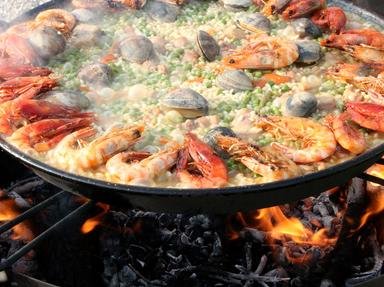
Hand to Mouth Trivia Quiz
Spanish foods eaten with your hands
Spanish food is one of the most delicious yet simple cuisines in the world. Even better, many Spanish foods can be eaten straight from your hands to your mouth, no need for cutlery! Can you pick out the foods that you can eat with your hands? Good luck!
A collection quiz
by Lpez.
Estimated time: 3 mins.